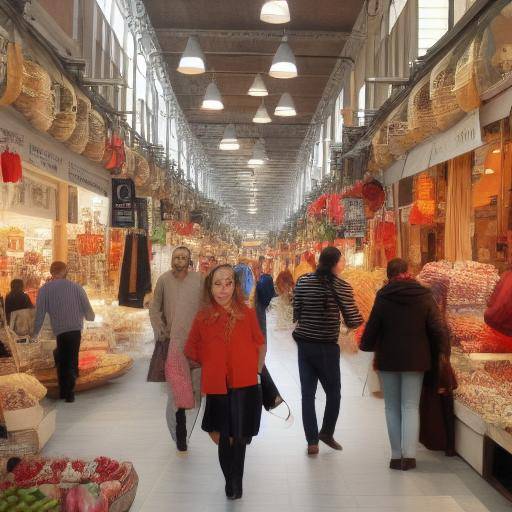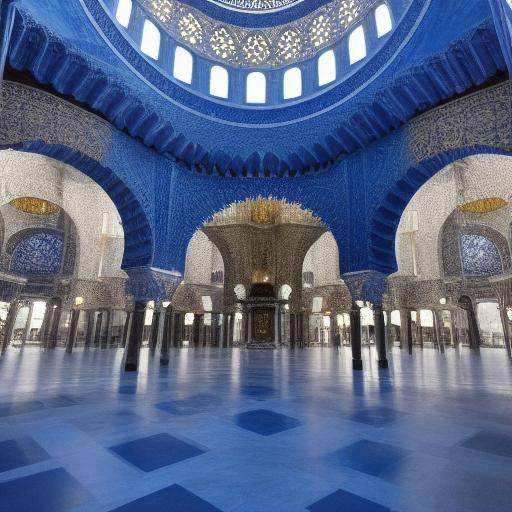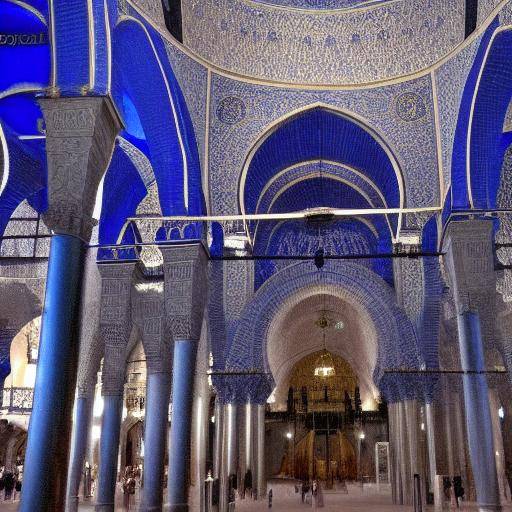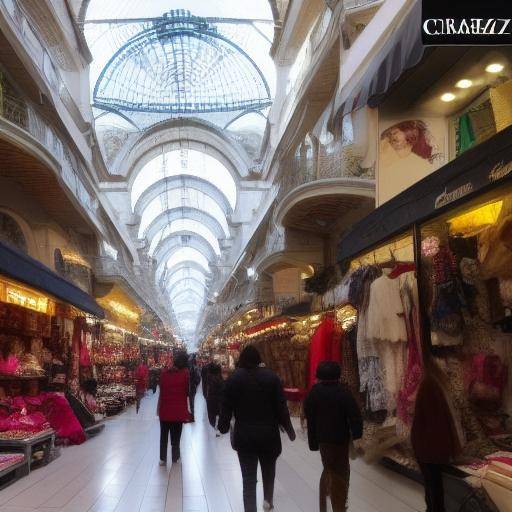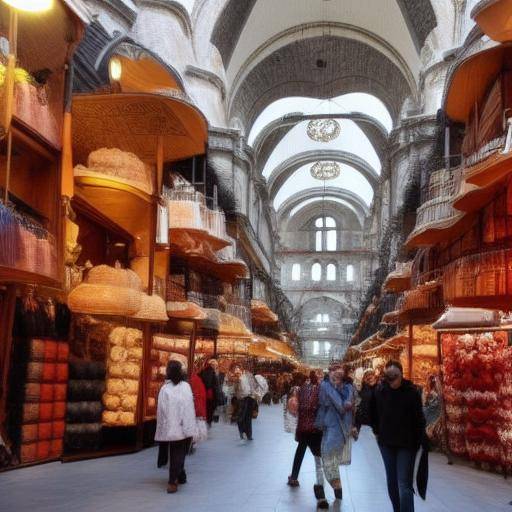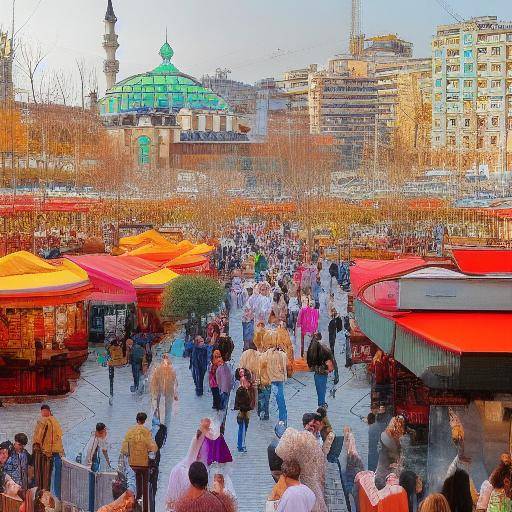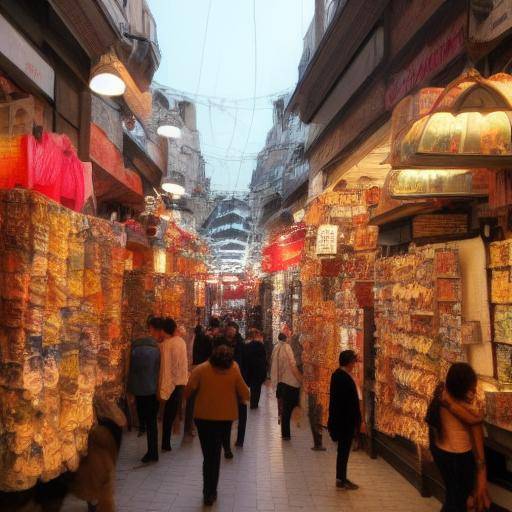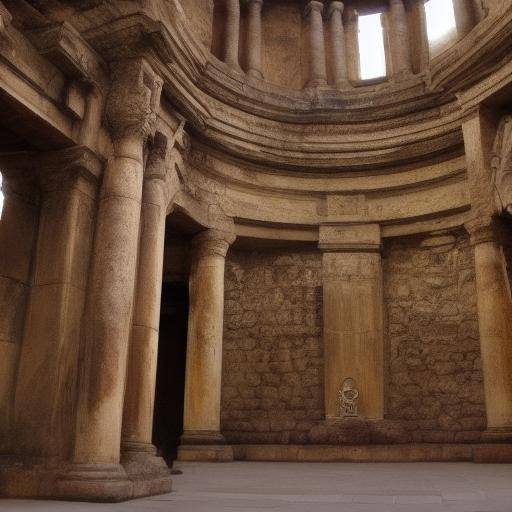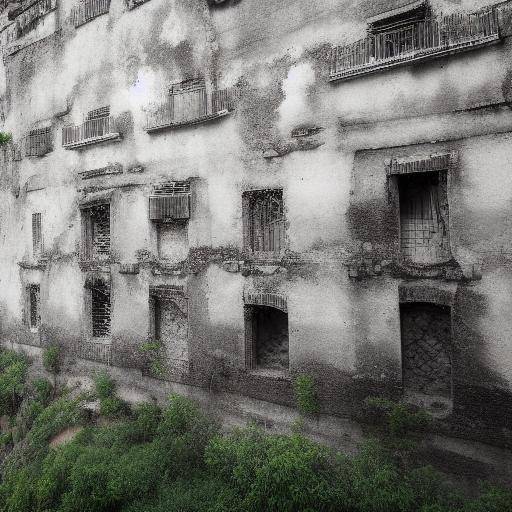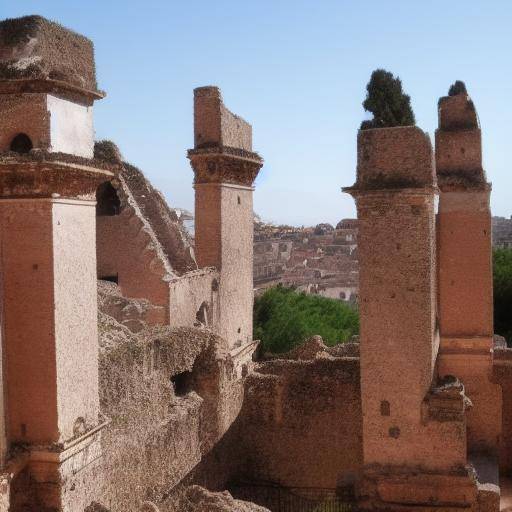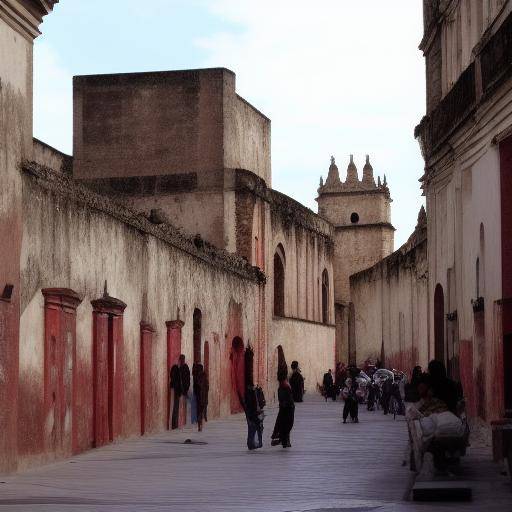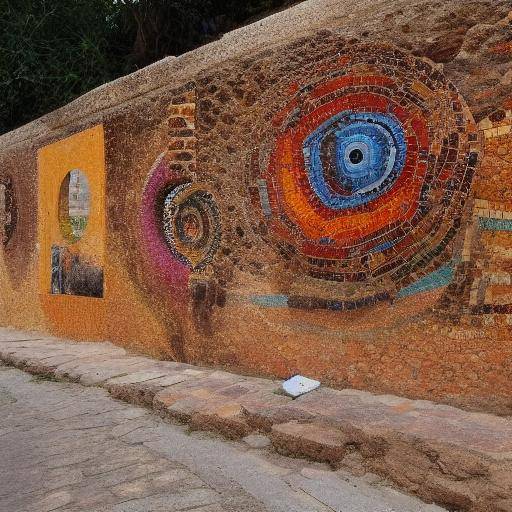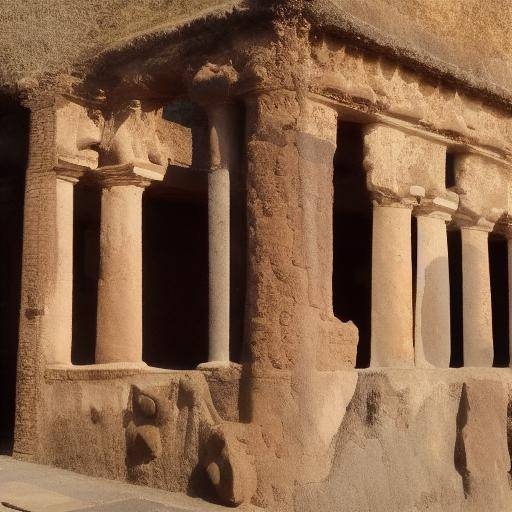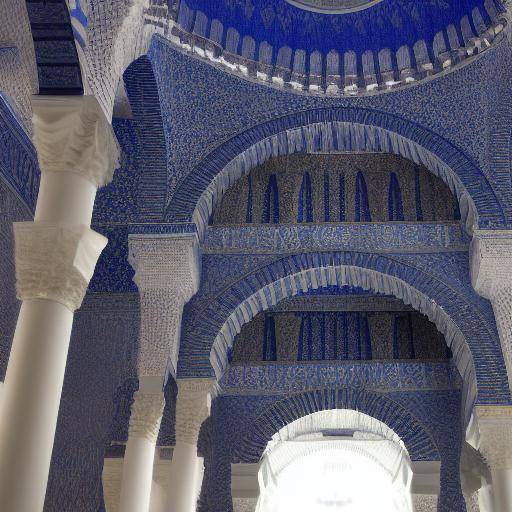
Introduction
The exotic charm and rich cultural history of Istanbul, the gateway between the Asian and European continent, make this tourist destination a dream place for travelers and lovers of Islamic architecture. At the heart of this vibrant city is the famous Blue Mosque, known as Sultanahmet Camii in Turkish. This architectural wonder, with its distinctive design and rich religious heritage, is one of the most emblematic attractions in Turkey. In this article, we will explore the secrets and hidden wonders of the Blue Mosque, as well as its impact on the city of Istanbul and Turkey as a whole.
History and Background
The Blue Mosque, one of the most striking and beautiful mosques in the world, was built in the early seventeenth century during the reign of Sultan Ahmed I. His intention was to compete with the majesty of the Basilica of Santa Sofia, close to it, and leave an indelible mark in the history of the Islamic architecture. The architect Sedefkâr Mehmed Ağa designed this splendid sanctuary, whose domes and minaretes are majestically raised on the Istanbul horizon.
The Blue Mosque, with its distinctive interior design, exhibits an impressive selection of handmade ceramic tiles, which earned it its name in various shades of blue. The magnificent combination of natural light, ornamental columns and intricate details is a masterpiece that leaves visitors breathless.
Analysis in Deep
The Blue Mosque is a testimony to the architectural grandeur and cultural wealth that characterize Istanbul. Its role as a place of worship remains central in the daily life of the city, and its impact extends beyond purely architectural considerations.
At the tourist level, the Blue Mosque attracts millions of visitors every year, making it one of the most popular destinations in Turkey. However, this massive influx also poses challenges in terms of preserving the heritage and management of sustainable tourism.
Comprehensive review
The Blue Mosque is not only an architectural icon, but also a symbol of Islamic faith and devotion. Its role in society is multifaceted, and its influence extends to educational, cultural and charitable activities, contributing to community cohesion.
Comparative analysis
By comparing the Blue Mosque with other historical structures of Istanbul, such as the Basilica of Santa Sofia, similarities and contrasts are revealed that enrich the understanding of the architectural and cultural heritage of the city. This comparison allows us to appreciate the diversity and convergence of influences that shape the cultural landscape of Istanbul.
Practical Tips and Accessible Advice
For visitors wishing to explore the Blue Mosque, it is crucial to respect the appropriate label and clothing standards before entering the enclosure. In addition, with the guidance of a local expert, you can fully appreciate the spiritual significance and aesthetic beauty of this exceptional site.
Ideas and Industry Information
The views of experts in Islamic architecture, heritage conservation and tourism management offer valuable insights on the current and future role of the Blue Mosque in Istanbul. According to experts, ensuring the long-term preservation of this cultural treasure is a challenge that requires a combination of local and international efforts.
Case Studies and Practical Applications
The various restoration and conservation cases of the Blue Mosque offer lessons on the importance of careful planning and the continued commitment to the integrity of the site. These examples illustrate how collaboration between local experts, government authorities and international organizations can ensure the protection of this invaluable heritage.
Future Trends and Predictions
As Istanbul remains a popular tourist destination and a constantly evolving cultural centre, the Blue Mosque is expected to maintain its lasting attractiveness and lasting influence. However, it is also crucial to address the challenges of tourism management and conservation to ensure their validity over time.
Conclusions
In short, the Blue Mosque is much more than an architectural monument; it is a symbol of the rich multicultural history of Istanbul and a source of spiritual and aesthetic inspiration. Its impact transcends geographical and cultural borders, captivating visitors from around the world and leaving a lasting impression on the hearts of those who have the fortune to explore it.
Frequently asked questions
What is the meaning of blue tiles in the Blue Mosque?
Blue tiles in the Blue Mosque represent a symbolic combination of natural and spiritual elements. The blue color is associated with the sky and the divine in the Islamic faith, reflecting the search for the transcendental and ethereal in architectural design.
What is the best time of the year to visit the Blue Mosque?
Spring and autumn are the ideal seasons to visit the Blue Mosque, as the weather is more temperate and there are less crowds of tourists compared to the summer months. It is also advisable to avoid prayer schedules to respect the sacred space of the mosque.
What is the most outstanding architectural influence in the construction of the Blue Mosque?
The architecture of the Blue Mosque combines elements of the Ottoman tradition with influences of classical Islamic architecture, highlighting a unique synthesis of styles and techniques. This innovative approach marked a milestone in the development of religious architecture in Turkey.
Is it possible to take photographs inside the Blue Mosque?
Yes, it is allowed to take photographs within the Blue Mosque, as long as it is done with respect and consideration for the faithful who are praying. It is important to remember that the mosque is a sacred place, and decorous and relapsed behaviour must be maintained.
What is the historical importance of the Blue Mosque in Turkish culture?
The Blue Mosque has been a significant symbol of Turkish identity and an expression of grandeur and splendor for centuries. His legacy endures as a lasting testimony to Turkey's rich cultural and religious heritage.
What other tourist attractions close to the Blue Mosque can be visited?
In addition to the Blue Mosque, visitors can explore the nearby Basilica of Santa Sofia, the Topkapi Palace and the Great Bazaar, which are emblematic destinations that enrich the cultural experience in Istanbul.
Sources
- Metropolitan Municipality of Istanbul
- Museum of the Blue Mosque
- Ministry of Culture and Tourism of Turkey
In conclusion, the Blue Mosque is not only an architectural gem, but a living testimony of the rich history and vibrant culture of Istanbul and Turkey. Its beauty, spiritual meaning and its lasting influence make it a must-see destination to explore the fascinating intersection between architecture, faith and cultural heritage. By immersed in the majesty of the Blue Mosque, visitors witness the confluence of aesthetic beauty and spiritual devotion that make it an invaluable treasure for humanity.


